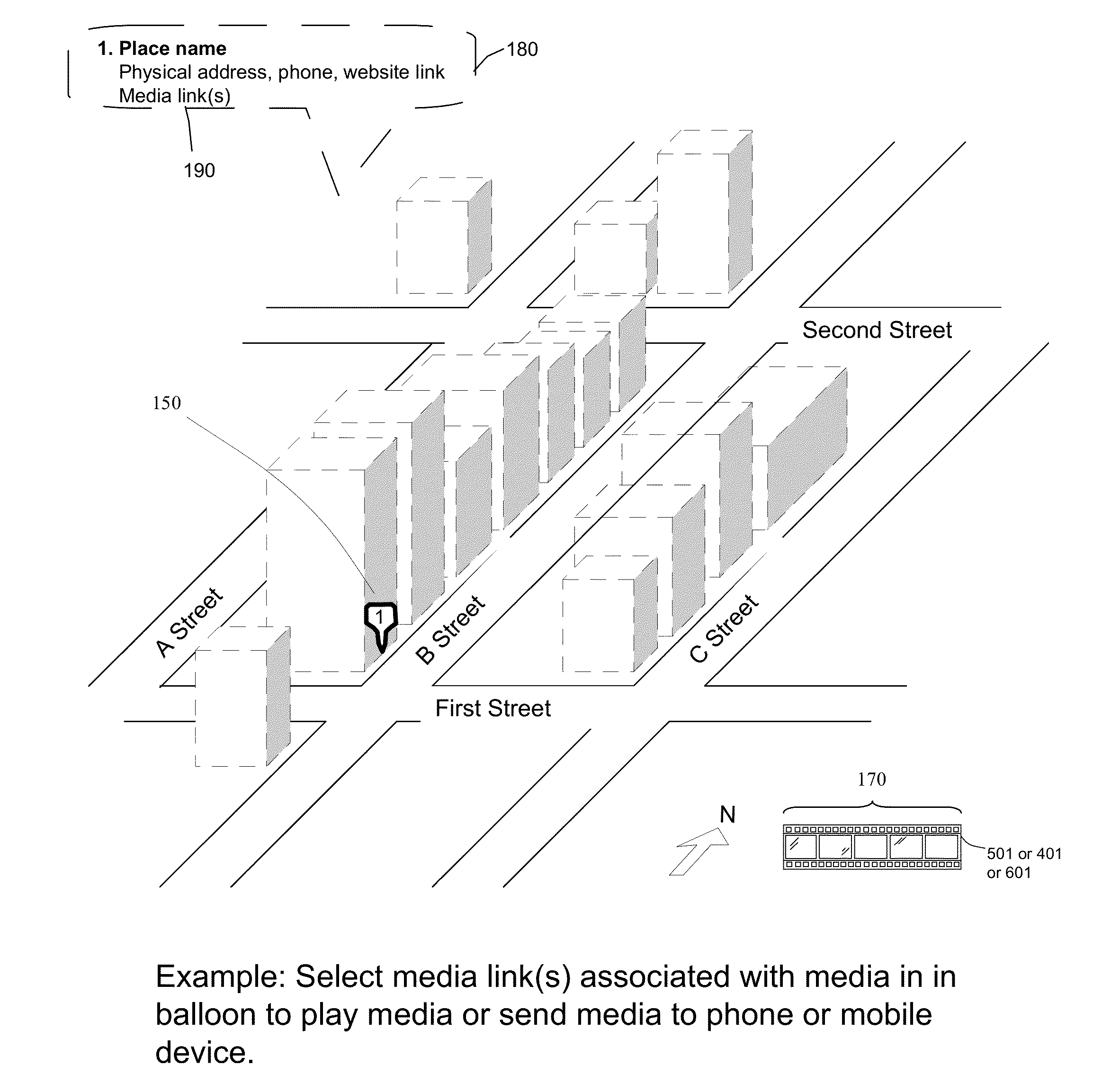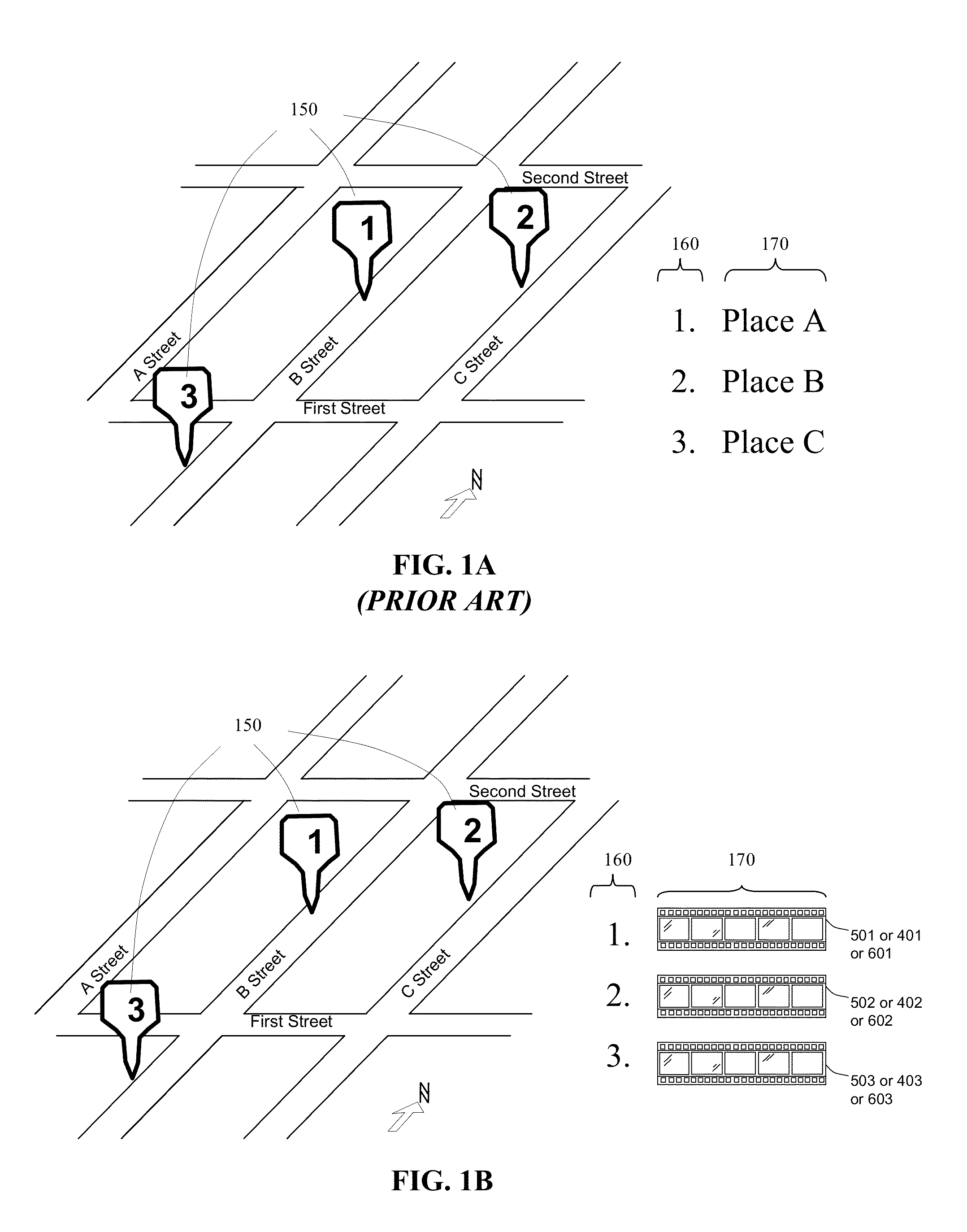Methods and Systems of Augmented Reality on Mobile Devices
a mobile device and computer technology, applied in the field of computer implemented methods and systems for augmented reality on mobile devices, can solve the problems of not being interested in every media file (especially user created content) uploaded by every user of a content site, and the prior art does not disclose a mobile 2d map or 3d view method, etc., to achieve the effect of reducing time and effort, improving information distribution efficiency, and distributing digital information inexpensively
- Summary
- Abstract
- Description
- Claims
- Application Information
AI Technical Summary
Benefits of technology
Problems solved by technology
Method used
Image
Examples
Embodiment Construction
[0183]With reference to FIGS. 1A, 1B, 2A, 2B, 3A, 3B, 4A, 4B, and 5A through 5F, one or more map markers 150 displayed in a 2-D or 3-D view of a street grid as well as a legend of the places. FIGS. 1A, 2A, 3A and 4A illustrate the prior art having map markers and names or descriptions of each place but not links to videos or other media files (other than photos). FIGS. 1B, 2B, 3B and 4B illustrate an embodiment of the invention where each mapmarker is linked to at least one media file associated with the particular place or destination. In FIGS. 1B, 3B and 4B, the 2-D or 3-D view does not include buildings or terrain while in FIG. 2B the view includes buildings. FIGS. 1B, 2B, and 4B show traditional map markers while FIG. 3B shows map markers in the form of symbols. Referring to FIGS. 5A through 5F in various embodiments of the invention the viewer may select a map marker comprising a display ad, a billboard, a balloon, a fireworks or spotlights, or other object rather than a tradit...
PUM
 Login to View More
Login to View More Abstract
Description
Claims
Application Information
 Login to View More
Login to View More - R&D
- Intellectual Property
- Life Sciences
- Materials
- Tech Scout
- Unparalleled Data Quality
- Higher Quality Content
- 60% Fewer Hallucinations
Browse by: Latest US Patents, China's latest patents, Technical Efficacy Thesaurus, Application Domain, Technology Topic, Popular Technical Reports.
© 2025 PatSnap. All rights reserved.Legal|Privacy policy|Modern Slavery Act Transparency Statement|Sitemap|About US| Contact US: help@patsnap.com



